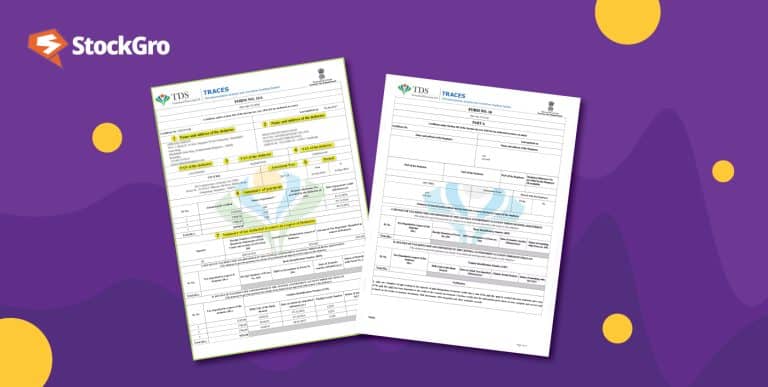
Investment planning in the early years is crucial to secure the future. The earlier a person starts investing, the better the amount gets compounded over the years. Moreover, we are in an age where there is availability of various types of investment options. The feasibility and requirements are assessed to select among them.
The market offers opportunities to tap the potential of demand and supply forces. However, it is accompanied by volatility that can affect its returns. The government also provides some securities, without market exposure and with some fixed returns. It is not accompanied by market volatility, but can potentially affect and vary from market returns.
Systematic Investment Plans (SIPs) of mutual funds are one of the most popular instruments for investors. Similarly, the Public Provident Fund (PPF)can also help grow money with small investments.
However, due to the common feature of regular investment, investors may get confused about the better option. Let’s explore in detail about SIP and PPF.
What is SIP?
SIPs are most common among investors. It allows them to invest in small amounts regularly, which grow with the market returns of the particular fund. In just July 2024, approximately 72 lakh new SIPs were opened. Some features of mutual fund SIP are:
- Regular investment
SIPs help investors invest regularly. It benefits from rupee cost averaging, where the cost of investment is averaged out over the tenure of investment against the returns. Moreover, this investment starts as low as ₹500 every month.
- Market exposure
Mutual funds invest a pool of money into the market. These funds are managed by fund managers of specific schemes. However, the exposure of the market poses a risk of market volatility.
Investors can easily sell their mutual fund units of open funds. This flexibility helps in meeting expenses without compromising investment growth.
- Taxation
Other than the Equity-Linked Securities Scheme (ELSS), investors can not get tax deductions. ELSS provides deduction under Section 80C of the Income Tax Act, 1961, up to the limit of ₹1.5 lakhs.
Read this: SIP investment: Your path to wealth building.
What is PPF?
The Government of India aims to imbibe disciplined investment behaviour among people in the country. This scheme is known as the Public Provident Fund (PPF). PPF account has some key features, such as:
- Regular investment
It helps investors save money regularly. The deposits start at a minimum of ₹500/- in the first year. After this, investments can be made in the multiple of ₹50, maximum up to ₹1.5 lakhs per annum.
- Government security
PPF does not invest in any market security. Thus, there is no market volatility risk. The government will decide the interest rate for PPF. However, inflation risk may affect the investment.
- Return
PPF accounts active from April 1, 2024, will get an interest rate of 7.1%. The returns are considered lower than other instruments. However, it provides security from market volatility.
- Taxation
Investors can get a deduction of up to ₹1.5 lakhs per annum for a PPF investment under Section 80C of the Income Tax Act, 1961.
- Loan facility
Investors can avail the loan from the banks with the help of Form-2. This loan amount would not exceed 25% of the balance, two years before the preceding year.
- Low liquidity
The minimum span for this investment is 15 years. However, investors can withdraw this amount after seven years, at every three months. This lock-in reduces the liquidity of an account.
Must read: How to do tax planning for high-income earners?
Comparative analysis: SIP vs PPF
Understanding the features (as mentioned above) of PPF and SIP is crucial for checking the suitable option for an investor.
| Particulars | Systematic Investment Plan | Public Provident Fund |
| Minimum investment | ₹500/- | ₹500/- first time (then in ₹50 multiples) |
| Maximum investment | No limit. | ₹1.5 lakhs |
| Lock-in period | Close funds: mentioned in the scheme.Open funds: No lock-in. | 15-year lock-in period. |
| Fund withdrawal | As per the type of fund (close and open) and scheme details. | After 7 years. Every three months. |
| Risk | Yes. As per the market instrument that the scheme invests in. | No risk due to market exposure. Inflation risk may affect |
| Tax deduction | Only for ELSS funds under Section 80C up to ₹1.5 lakhs.Rest no scheme offers tax benefits | Tax benefit of up to ₹1.5 lakhs, under Section 80C. |
Bottom line
Mutual funds SIP and PPF accounts have a common feature of regular investment. Investors willing to have secure returns without any market risk may find PPF a suitable investment. Moreover, PPF offers a tax deduction benefit, absent in most mutual fund schemes. However, people willing to earn returns aligning with the market may find investment through SIP feasible.
Thus, between SIP and PPF, the better investment should be determined, as per the investor’s objectives.
Check this out! Risk tolerance and investment strategy.
FAQ
Q1. How much will I get if I invest ₹1.5 lakhs yearly in PPF for 15 years?
The investment in PPF, active after March 31, 2020, earns 7.1% interest.
Final Amount = Principle [({(1+ROI)^T}-1)/ROI] * (1+ROI)
Here, ROI=interest%, T=period of investment
So, if an investor starts investing ₹1.5 lakhs yearly for 15 years, then it will be calculated as follows (assuming 7.1% to be constant here for 15 years):
Final amount = ₹39,80,118/- approximately.
Q2. Can I invest ₹1.5 lakhs in PPF or ₹50k in NPS?
Yes, an investor can invest up to ₹1.5 lakhs per annum in PPF and ₹50,000 in the National Pension Scheme (NPS). Investors can claim a deduction of ₹1.5 lakhs under Section 80C. However, for NPS deduction can be claimed under Section 80CCE for ₹1,50,000/-. Over this, ₹50,000 can be claimed under Section 80CCD.
Q3. Why is PPF not a good investment?
A public provident fund (PPF) is a government investment scheme that provides an option for regular investment. Maximum ₹1.5 lakhs can be invested per annum. It safeguards from market risk. However, there is a risk of inflation because its rates can be lower than the market. PPF lacks liquidity and has a lock-in period of 15 years. So, investors should determine the objectives before investing.
Q4. Which is better, FD or SIP?
Fixed deposit/FD offered by the banks helps investors in lump sum investments and earn returns on it. It has a pre-decided period for investment. Withdrawing the amount before this maturity will reduce the interest. SIP is a mutual fund plan which helps investors invest small amounts regularly. It earns market returns. Selecting the better option between FD and SIP depends on the investor’s risk appetite and investment objective.
Q5. Which is better, PPF or SIP?
Public Provident Fund/PPF is a government scheme that offers regular investment options. A fixed lock-in period of 15 years of PPF is its crucial feature. Systematic Investment Plan/SIP helps make regular monthly investments in mutual funds schemes. It does not have any lock-in period for open funds. So, investors should determine their investment horizon and risk appetite before selecting the suitable option between PPF and SIP.

